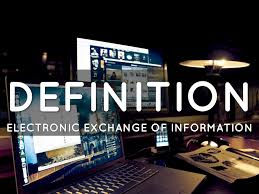Digital Citizenship
Digital Communication



Describe your image.

Digital communication
Ribble (2011) refers to digital communication as “the electronic exchange of information”.
Digital communication is communication that is mediated by digital technology. The internet technologies have provided new methods of communication such as cell phones, emails, instant messaging, text messaging, social networking sites, forums and blogs.
A lot of people in business prefer using email compared to telephone calls as emailing leaves paper trail as a record of the communication, that they can go back to for reference. Anything communicated electronically is kept on a server, even if the person deleted it, it can be retrieved on a later stage if need be. This then means that users need to think carefully before sending out an email. This goes for all other methods of communicating like texting and social networking sites, even after being deleted the data is stored in cyberspace.
Sending texts and receiving calls while in class or in a meeting and listening or watching inappropriate material in public are some of inappropriate communication behaviors.
Ribble, M. 2011. Digital Citizenship in Schools : Nine Elements All Students Should Know (2nd Edition). ISTE, United States.
http://site.ebrary.com/lib/iieza/reader.action?docID=10759760
Digital users need to consider the implications of what they are communicating:
-
the relevance, suitability and security of the information they communicate publicly
-
who and what they are representing (identity)
-
digital permanence - once information is online, it is not necessarily easy to remove.
-
Users need to be aware that some online tools allow people to use a free version but this can mean their work is stored online and made publicly available.
-
Of course with some other tools such as a blog, the very purpose of the tool is to make the communication a public one.
http://pages.ucsd.edu/~bgoldfarb/comt109w10/reading/Lankshear-Knobel_et_al-DigitalLiteracies.pdf

